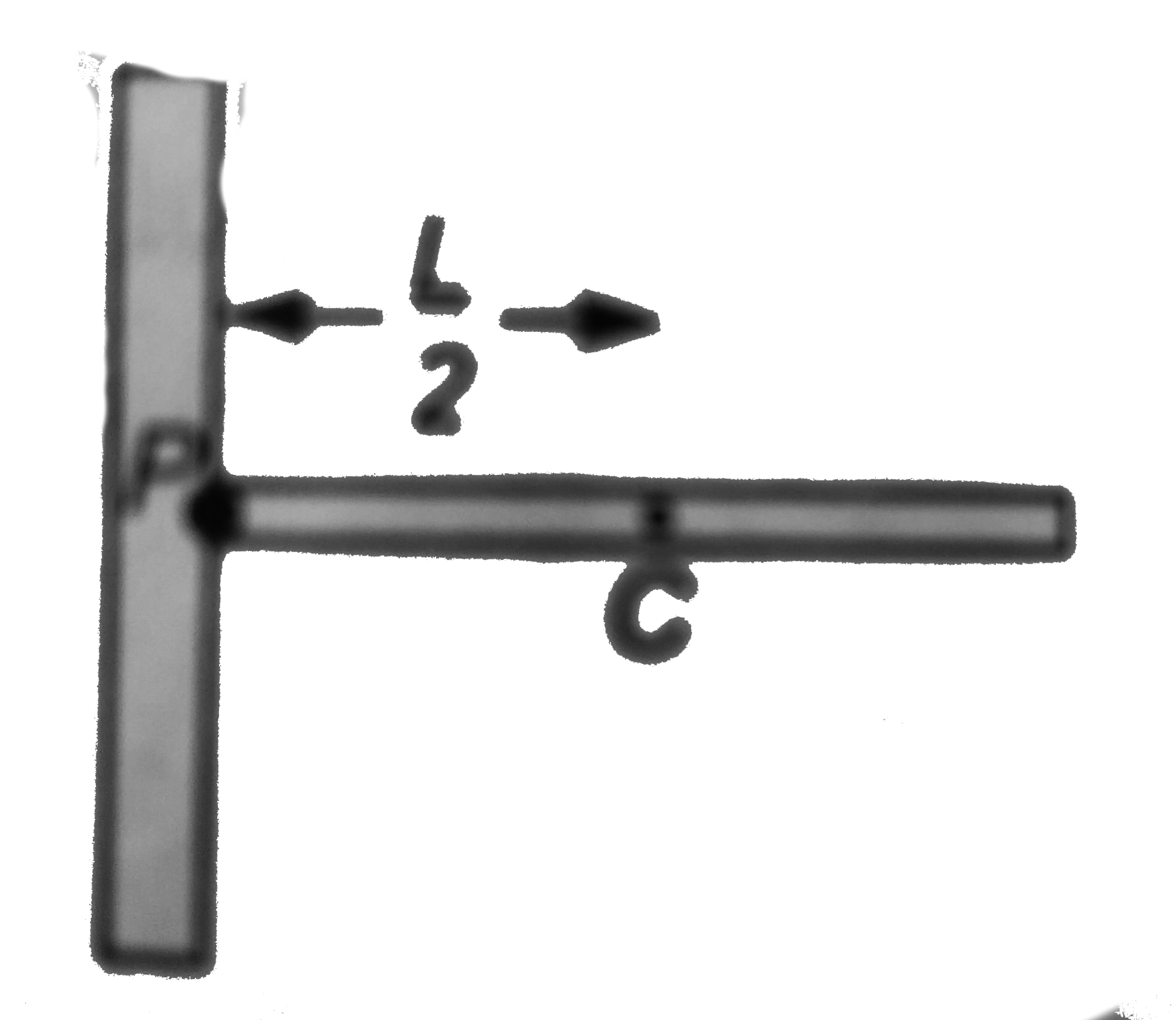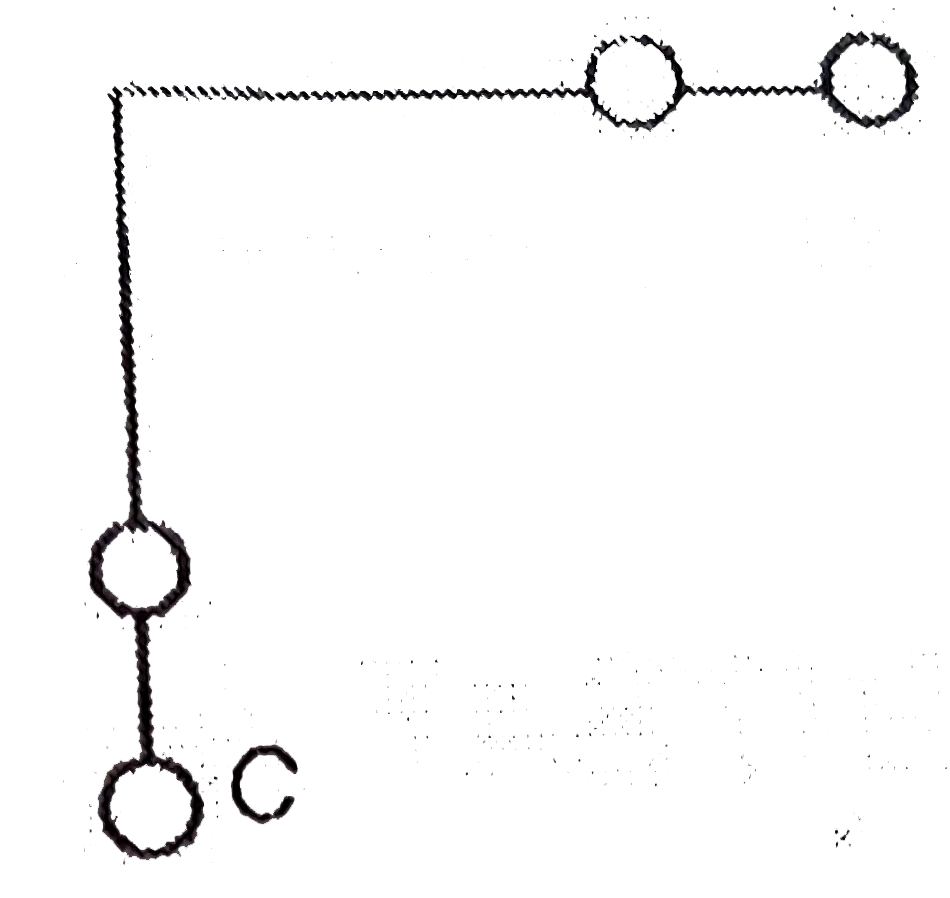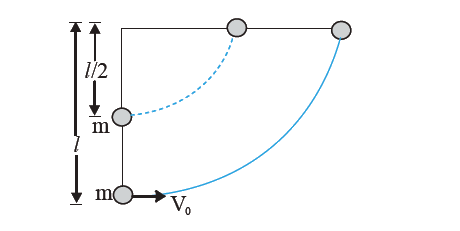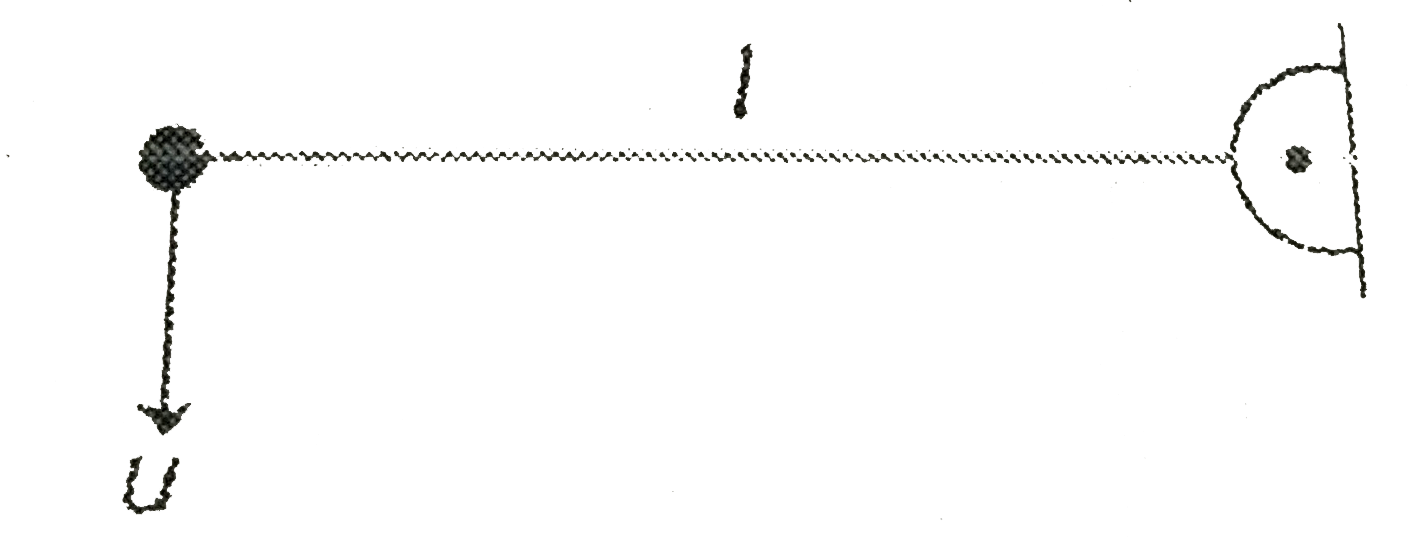A light rod of length l is pivoted at the upper end. Two masses (each m), are attached to the rod, one at the middle and the other at the free end. What horizontal velocity must be imparted to the lower end mass, so that the rod may just take up the horizontal position?

√6lg/5
√lg/5
√12lg/5
√2lg/5
The correct Answer is:C
Topper's Solved these Questions
Similar Questions
How much energy will be needed for a body of mass 100kg to escape from the earth- (G=10M/S2 and radius of earth = 6.4 xx 10^(6) m)
View Solution
A uniform rod of length L and mass m is free to rotate about a frictionless pivot at one end as shown in figure. The rod is held at rest in the horizontal position and a coin of mass m is placed at the free end. Now the rod is released The reaction on the coin immediately after the rod starts falling is
View SolutionConsider a rod of mass M and length L pivoted at its centre is free to rotate in a vertical position plane. The rod is at rest in the vertical position. A bullet of mass M moving horizontally at a speed v strikes and embedded in one end of the rod. The angular velocity of the rod just after the collision will be.
View SolutionA weightless rod of length 2l carries two equal masses 'm' , one secured at lower end A and the other at the middle of the rod at B . The rod can rotate in vertical plane about a fixed horizontal axis passing through C . What horizontal velocity must be imparted to the mass at A so that it just completes the vertical circle.
View SolutionA mass 2 m is fixed at one end of a light rod of length I . What horizontal velocity should be imparled to the lower end so that it may just take up the horizontal position ? If the mass is now rearanged with m at the lower end and the other m at the middle, what velocity is required ?
View SolutionA ball of mass m is attached to one end of a light rod of length l , the other end of which is hinged. What minimum velocity v should be imparted to the ball downwards, so that it can complete the circle ?
View SolutionA weightless rod of length l carries two equal masses m one fixed at the end and other in the middle ofhte rod. The rod can revolve in a vertical plane about A. Then, horizontal velocity which must be imparted to end C of rod to deflect it to horizontal position is

View Solutionl लंबाई की एक नगण्य भार वाली छड़ के निचले सिरे से एक छोटा , पर भारी कण जुड़ा हुआ हैं । छड़ अपने ऊपरी सिरे के परितः घूम सकती हैं । कण को न्यूनतम कितना क्षैतिज वेग दिया जाए कि वह ऊर्ध्वाधर वृत्त पूरा कर लें ?
View SolutionA light rod of length l is pivoted at the upper end. Two masses (each m), are attached to the rod, one at the middle and the other at the free end. What horizontal velocity must be imparted to the lower end mass, so that the rod may just take up the horizontal position ?

View Solutionl लम्बाई की एक छड़ कब्जे पर अपने एक क्षैतिजतः सिरे पर घूमती है। यह गिरने के लिए स्वतन्त्र है। छड़ के दूसरे सिरे का वेग है
View SolutionA uniform rod of length L and mass M is pivoted freely at one end (at bottom level) and placed in vertical position. What is the tangential linear acceleration of the free end when the rods is horizontal ?
View SolutionA uniform rod of length L and mass M is pivoted freely at one end (at bottom level) and placed in verticla position. What is the tangential linear acceleration of the free end when the rods is horizontal?
View SolutionA uniform rod of mass m and length / is hinged at upper end. Rod is free to rotate in vertical plane. A bail of mass m moving horizontally with velocity vo collides at lower end of rod perpendicular to it and sticks to it. The minimum velocity of the ball such that combined system just completes the vertical circle will be
View Solution
A uniform rod of length L and mass m is free to rotate about a frictionless pivot at one end as shown in figure. The rod is held at rest in the horizontal position and a coin of mass m is placed at the free end. Now the rod is released The reaction on the coin immediately after the rod starts falling is
View SolutionA ball of mass m is attached to one end of a light rod of length l, the other end of which is hinged. What minimum velocity v should be imparted to the ball downwards, so that it can complete the circle ?

View Solution
